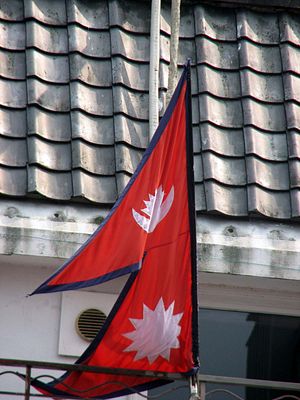There were hopes of political stability when Nepal’s two most prominent communist parties merged into the Nepal Communist Party (NCP) after winning the general election in 2017 as a coalition with almost a two-thirds majority. However, internal conflict within the NCP is at a peak and signs are evident that it might collapse under the weight of its own success. Should that happen, the resulting split would mean that the NCP had failed to rescue the country from political instability and to stand up to the expectations of the left-leaning populace. On top of that, a split would also be a blow to the progressive agenda and the promise of “Happy Nepalese and Prosperous Nepal” championed by the communist-led government.
Nepali politics have witnessed a series of political upheavals after the restoration of multiparty democracy in 1990. After failing both to manage intra-party political disputes and to control corruption and poor governance, Prime Minister Girija Prasad Koirala called for a midterm election in 1994, three years into the government. The politics of Nepal have taken a bumpy road ever since. The current political development surrounding the NCP interestingly shares the same crossroads that Koirala faced in 1994.
Nepal has been under 22 different governments, a majority of those lasting for less than a year, in a 24 year span from 1994 to 2018. Political instability coupled with the failure to deliver what the public expected made way for a 10-year Maoist insurgency beginning in 1996, which took 16,000 lives, and a soft coup from then-King Gyanendra in 2005. The future seemed rosy after the Maoists joined the peace process in 2006 and after the establishment of Nepal as a federal democratic republic. However, it took two rounds of elections for the final delivery of a contentious constitution after seven years of deliberation.
The NCP leadership should critically recall the juncture of 1994, which paved the way for decades of instability. The splitting of the NCP, at this point, would risk instigating another round of instability in the country through destabilization of the executive branch in the central and provincial governments.
NCP has an almost two-thirds majority in the parliament. On close inspection however, the voter base of the closest rival — Nepali Congress — and the larger party within the merged NPC coalition, the Communist Party of Nepal (Unified Marxist Leninist) or CPN(UML), is almost even. In 2017, in coalition CPN(Maoist Center) and CPN(UML) ran on the banner of a left alliance and brought forward a common candidate for first past the post (FPTP) seats. The left alliance, which later merged to become the NCP, won 70 percent of the FPTP seats because their candidates amassed all the left-leaning votes for the first time, in a country with a major leftist leaning.
Even though the parties put forward common candidates for FPTP seats, however, they vouched for proportionate seats separately. The total votes garnered by the then-CPN(UML) in the proportionate system was only 0.47 percentage point more than that of the closest rival, Nepali Congress, while the then-CPN (Maoist Center)’s total was about 19 percentage points less than that of the Nepali Congress.
As such, irrespective of the factions along which the NCP might be split, there is a high possibility that in such a scenario the resulting split parties would be pushed to second, third, or fourth place in the upcoming election. Consequently, the current government would be the first and the last time the communist party enjoys an unrivaled share of the power in all levels of government. A split in the NCP would also mean that the communists lose their unrivaled hold in the six provinces in which they hold power.
The next general election is at least two and a half years away. A split now would mean that the next government will be a coalition government as no single party would have a majority in Parliament to form a government. There used to be a joke that Nepali governments came with an expiration date of nine months. Now that Article 100 of the Nepali Constitution prohibits a vote of no-confidence for two years after a government is formed, we may see a two-year tenured government as a new normal.
Political fidgeting to gain power or to bargain for power began as soon as Prime Minister K.P. Sharma Oli’s government marked its second year on April 15. This observation now begs the question of whether the party merger was about ideological unity or staged just for political leverage. As mentioned above, the NCP leaders must heed the patterns of Nepali political history post-1990 and make decisions keeping the interest of the country at the center.
Nepali people want the government to address their day-to-day concerns, such as a proper response to COVID-19, more jobs, higher wages, better roads, transparency, accountability, rule of law, good governance, and affordable cost of living. Frequent institutional or governmental changes, as we have seen in last 25 years, do not help in meeting such expectations. The NCP must solve its internal matters democratically, work diligently to meet the day-to-day demands of people, and make an effort not to disappoint the Nepali population again.
Pradip Adhikari has a bachelor degree in political science from the University of New Orleans. He writes about politics and policy issues in Nepal.

































